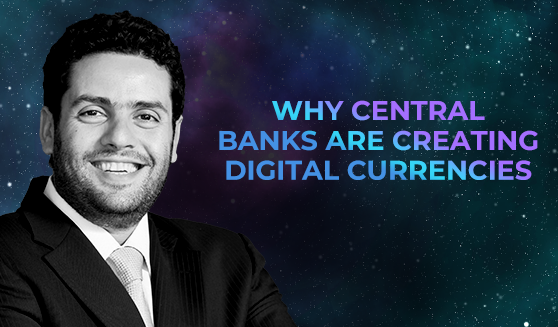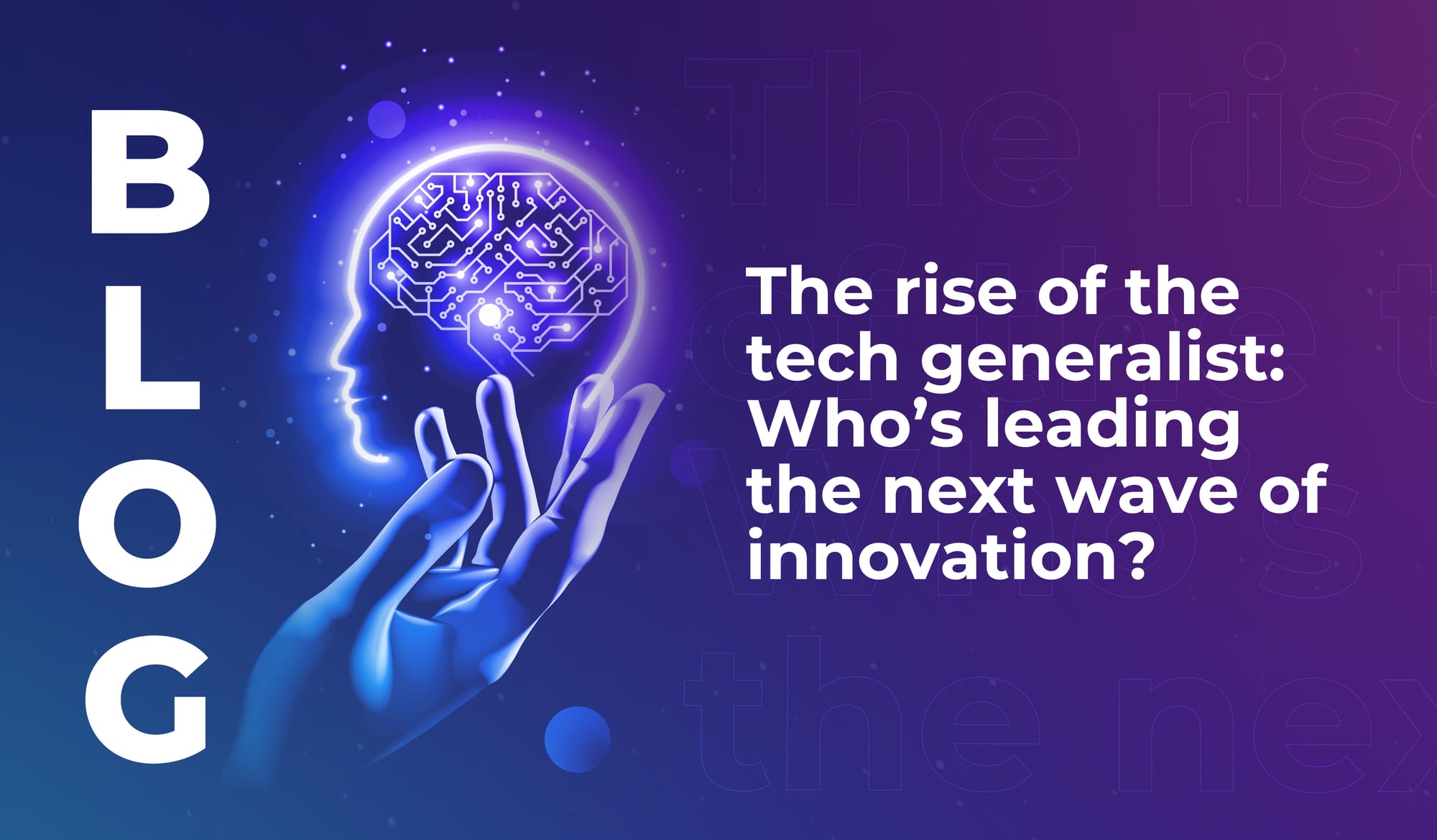
Tech careers with impact: The power of investing
If you’ve ever thought about becoming a tech investor, read this – learn why investors are the quiet force shaping the future of the industry.


When someone says ‘digital currency’, the world thinks ‘blockchain’. But blockchain isn’t the only tech that can be used to develop digital currency – and some economists don’t think that decentralised blockchain-based cryptocurrency ticks all the necessary boxes to be considered as money at all.
This isn’t true of all economists of course, and it’s certainly not true of all major finance institutions. Just this week, the Wall Street Journal reported that Goldman Sachs and JPMorgan are already processing some trades on cryptocurrencies including Ethereum. According to data from blockchain, there are currently about 254,904 blockchain transactions per day (that’s the aggregate number of confirmed transactions in the last 24 hours, at time of writing).
But at #LEAP22, Ziad Al Yousef (Deputy Governor for Development and Technology at Saudi Central Bank) suggested a different future for digital currency – with central banks as the driving force.
Generally speaking, economists work on a widely accepted definition of what money is, as laid out in books including the Dictionary of Economics.
Using this approach to defining money, something can be considered as money when it meets these three criteria:
So for Ziad Al Yousef, the key question in considering whether blockchain cryptocurrencies are money is whether all three of these criteria can be applied to those currencies – and he suggests that while blockchain can approximate these criteria, it can never meet them fully. Simply being a currency doesn’t mean crypto is money.
“I believe that the trust element of money,” Al Yousef said, “which is drawn by the guarantee to honour, undertaken by a credible entity – that is the most important feature. Such trust is not built in a day. It requires a credible and independent institution that withstands the test of time, the good and the bad.”
That credible institution doesn’t exist for public blockchain currencies because they’re decentralised by design. The idea is that they don’t rely on an institution. And if we take Al Yousef’s view, this means that blockchain isn’t (yet) really money – because it’s the credible institution that promises the store of value into the future. Without assurance that value will be stored, blockchain is – from a user perspective – volatile and unreliable.
Arguably, it’s the blockchain itself, and stable coins built on the blockchain, that will act as that guarantor of trust. Supporters of blockchain tech, like American academic Kevin Werbach, frequently say that it offers a new architecture for trust – one that doesn’t rely on blind faith in a profit-making institution.
For Al Yousef, though, that’s a long way off. But it’s clear that we need digital currency: more and more aspects of our lives are taking place in digital spaces, and digital transactions recorded a 29% annual growth at the end of Q1 2022.
So central banks – including Saudi Central Bank – are increasingly studying and implementing an emerging solution: the introduction of a central bank digital currency (CBDC).
The idea is that CBDC could continue the trust and integrity that central banks have established over years of business, and extend that into digital spaces with new digital currencies. According to the Atlantic Council’s CBDC tracker, 105 countries (representing more than 95% of global GDP) are currently exploring CBDC.
“Of course, there is still much to be considered, explored, and tested carefully before a central bank decides to issue a CDBC,” Al Yousef said.
Experts including William Farrington at currency.com expect the CBDC vs cryptocurrency debate to become louder on global platforms over the next few years. CBDCs have the advantage of being more stable, but cryptocurrency is gaining support because it’s decentralised and therefore, in a way, trustless. It’s worth noting that CBDCs might also be based on blockchain tech – but if so, they’ll be on a different, private, centralised version of that tech.
As it stands, it’s not clear which is better; and instead, for now at least, it’s up to financial industry figures, economists, and individual citizens to educate themselves and figure out whether they want to get behind a major economic disruptor (blockchain and cryptocurrency) or a new version of our existing monetary system (CBDCs).
When someone says ‘digital currency’, the world thinks ‘blockchain’. But blockchain isn’t the only tech that can be used to develop digital currency – and some economists don’t think that decentralised blockchain-based cryptocurrency ticks all the necessary boxes to be considered as money at all.
This isn’t true of all economists of course, and it’s certainly not true of all major finance institutions. Just this week, the Wall Street Journal reported that Goldman Sachs and JPMorgan are already processing some trades on cryptocurrencies including Ethereum. According to data from blockchain, there are currently about 254,904 blockchain transactions per day (that’s the aggregate number of confirmed transactions in the last 24 hours, at time of writing).
But at #LEAP22, Ziad Al Yousef (Deputy Governor for Development and Technology at Saudi Central Bank) suggested a different future for digital currency – with central banks as the driving force.
Generally speaking, economists work on a widely accepted definition of what money is, as laid out in books including the Dictionary of Economics.
Using this approach to defining money, something can be considered as money when it meets these three criteria:
So for Ziad Al Yousef, the key question in considering whether blockchain cryptocurrencies are money is whether all three of these criteria can be applied to those currencies – and he suggests that while blockchain can approximate these criteria, it can never meet them fully. Simply being a currency doesn’t mean crypto is money.
“I believe that the trust element of money,” Al Yousef said, “which is drawn by the guarantee to honour, undertaken by a credible entity – that is the most important feature. Such trust is not built in a day. It requires a credible and independent institution that withstands the test of time, the good and the bad.”
That credible institution doesn’t exist for public blockchain currencies because they’re decentralised by design. The idea is that they don’t rely on an institution. And if we take Al Yousef’s view, this means that blockchain isn’t (yet) really money – because it’s the credible institution that promises the store of value into the future. Without assurance that value will be stored, blockchain is – from a user perspective – volatile and unreliable.
Arguably, it’s the blockchain itself, and stable coins built on the blockchain, that will act as that guarantor of trust. Supporters of blockchain tech, like American academic Kevin Werbach, frequently say that it offers a new architecture for trust – one that doesn’t rely on blind faith in a profit-making institution.
For Al Yousef, though, that’s a long way off. But it’s clear that we need digital currency: more and more aspects of our lives are taking place in digital spaces, and digital transactions recorded a 29% annual growth at the end of Q1 2022.
So central banks – including Saudi Central Bank – are increasingly studying and implementing an emerging solution: the introduction of a central bank digital currency (CBDC).
The idea is that CBDC could continue the trust and integrity that central banks have established over years of business, and extend that into digital spaces with new digital currencies. According to the Atlantic Council’s CBDC tracker, 105 countries (representing more than 95% of global GDP) are currently exploring CBDC.
“Of course, there is still much to be considered, explored, and tested carefully before a central bank decides to issue a CDBC,” Al Yousef said.
Experts including William Farrington at currency.com expect the CBDC vs cryptocurrency debate to become louder on global platforms over the next few years. CBDCs have the advantage of being more stable, but cryptocurrency is gaining support because it’s decentralised and therefore, in a way, trustless. It’s worth noting that CBDCs might also be based on blockchain tech – but if so, they’ll be on a different, private, centralised version of that tech.
As it stands, it’s not clear which is better; and instead, for now at least, it’s up to financial industry figures, economists, and individual citizens to educate themselves and figure out whether they want to get behind a major economic disruptor (blockchain and cryptocurrency) or a new version of our existing monetary system (CBDCs).

If you’ve ever thought about becoming a tech investor, read this – learn why investors are the quiet force shaping the future of the industry.

Tech generalists will enable emerging technologies to integrate across industries and societies in meaningful ways. We still need specialists – but we also need big-picture people.

Discover three tech sectors facing a talent shortage this year. Could you find your ideal role in a high-demand sector like cybersecurity, cloud computing, or artificial intelligence?

If you’ve ever thought about becoming a tech investor, read this – learn why investors are the quiet force shaping the future of the industry.

Tech generalists will enable emerging technologies to integrate across industries and societies in meaningful ways. We still need specialists – but we also need big-picture people.

Discover three tech sectors facing a talent shortage this year. Could you find your ideal role in a high-demand sector like cybersecurity, cloud computing, or artificial intelligence?